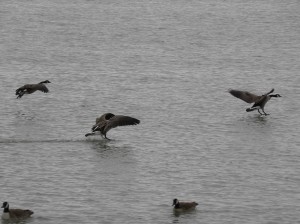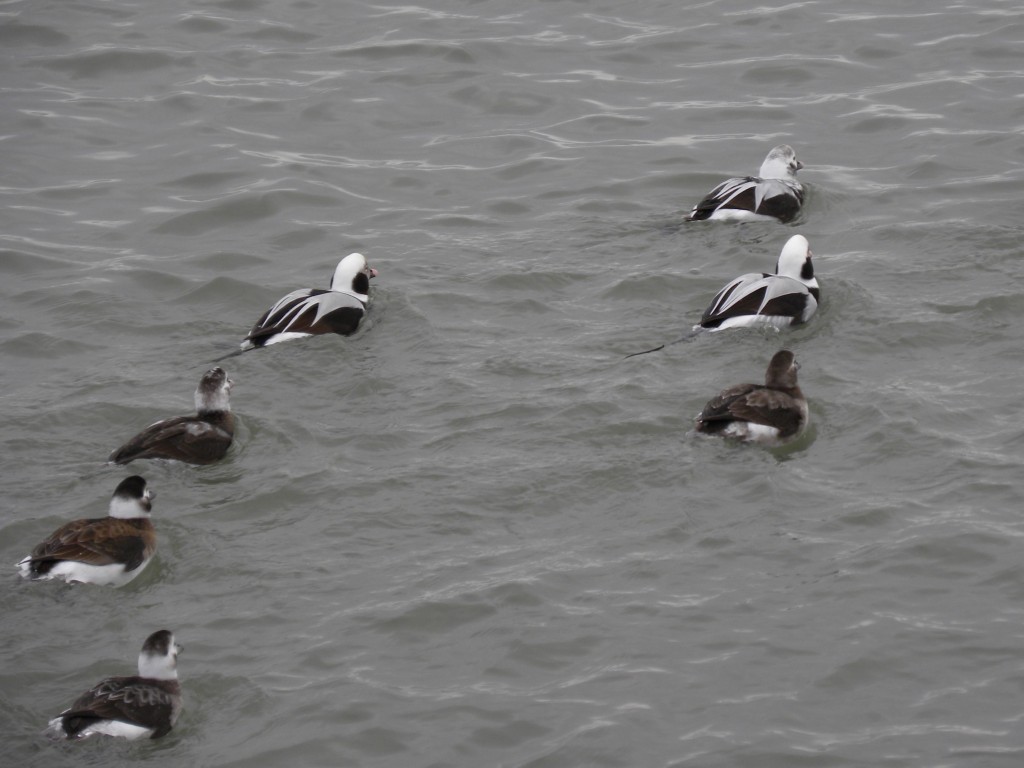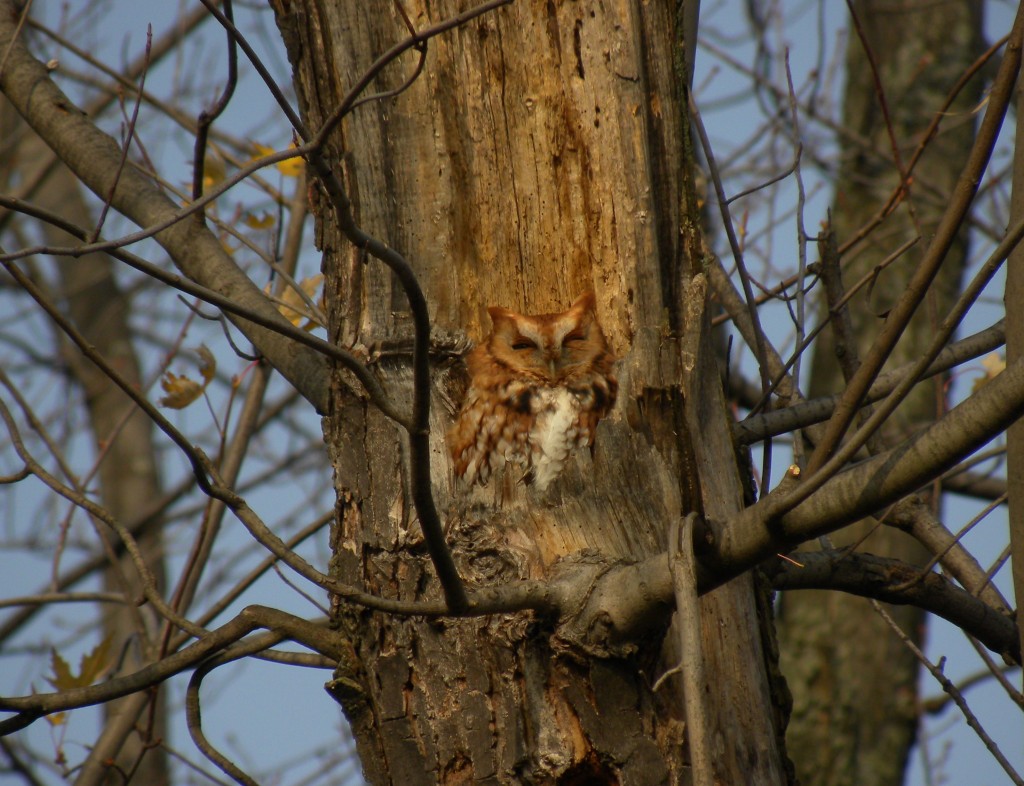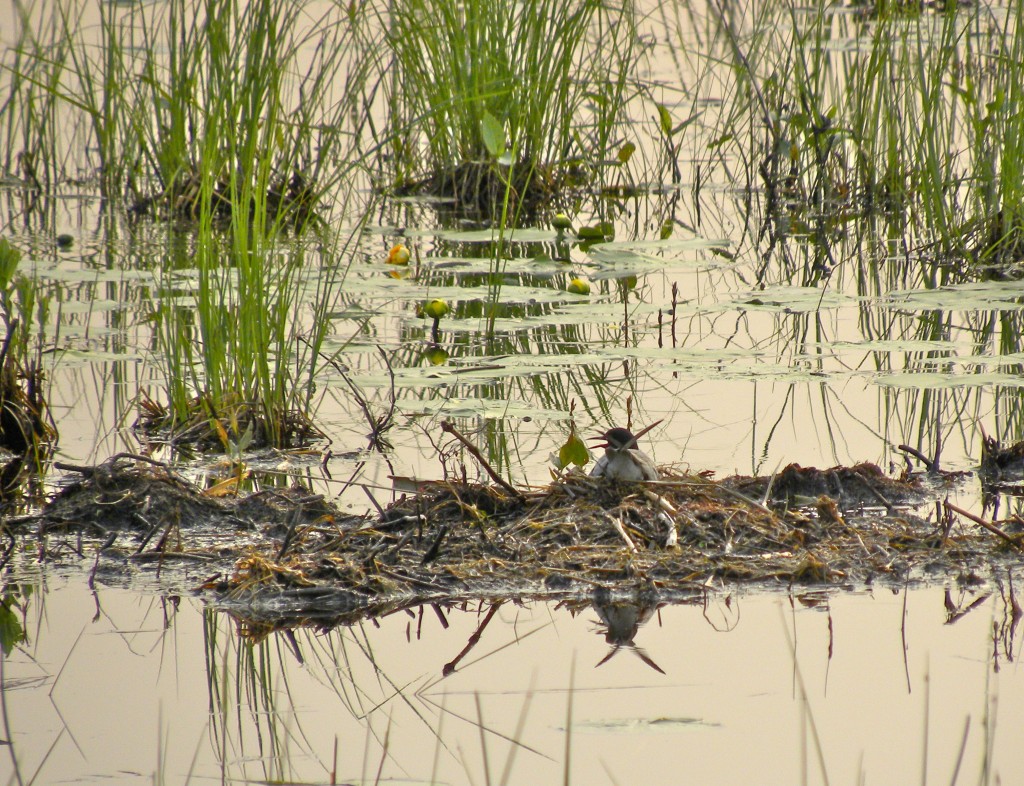January 1 2013. 10,000 Birds is an interesting and lively blog; I check it almost daily. This morning it challenged readers to report their first bird species of 2013. Living in an urban area means I’ve got a pretty high chance it’ll be something pretty mundane. And it was, a Ring-billed Gull swooped across the road as we drove out to a new and untried hiking spot; it could have been worse I suppose. On our cold, but sunny hike through some undulating hardwood forest I heard a Black-capped Chickadee, (number two) and an American Crow (number three). Nowhere to go but up.
I resolved to go out later and follow up on reports of Short-eared Owls. I have seen them at this particular site many times in previous years, but not in the last couple and Short-eared Owls are becoming scarce; rather sad.
About a decade ago when I was doing fieldwork for the Ontario Breeding Bird Atlas I had a fairly large group of Short-eared Owls hanging around my assigned square. I first detected them when I spotted one in swooping display flight over some less-intensively farmed fields. Once I knew where to expect them it became quite commonplace to see one or two sitting quietly on a post or in a tree during daylight hours. In due course we determined there was at least one breeding pair even though it was just across the boundary in another square. Not that it mattered where it nested, it was just exhilarating knowing that we had Short-eared Owls breeding here.
But back to today. I arrived at the reported site around 4.30 as the sun was going down. I walked a half-mile or so along a snowy track to a vantage point where I thought I might be able to see them, even though a wide drainage ditch stood between me and the birds’ favoured marshy field.
As I waited a pair of Northern Harriers hunted back and forth, one, a blue-grey male with classic wings-dipped-in-ink, passed quite close. I was content then that the outing, however cold and snowy, was a success, owls or not. But it got better, for a few moments later I saw, way off in the distance, the beautiful moth-like twisting and dipping flight of a Short-eared Owl. It reminded me of the tumbling, wind-tossed flight of the Northern Lapwing. The owl paused a couple of times alighting on a fence post, perhaps to feed, before continuing the hunt. As it became too dark to watch it any longer I left, satisfied that I’d improved upon the morning’s Ring-billed Gull; this Short-eared Owl was unquestionably Bird of the Day.




